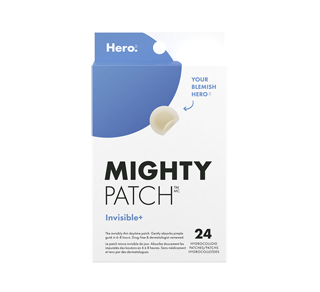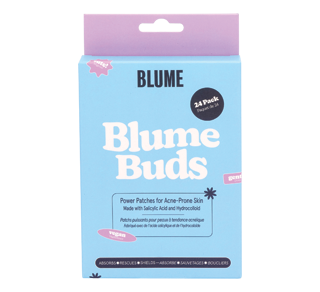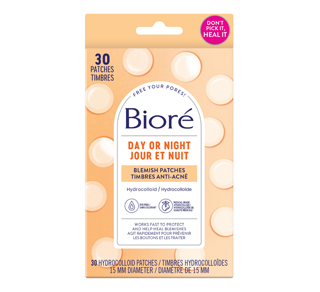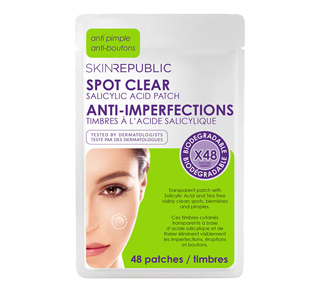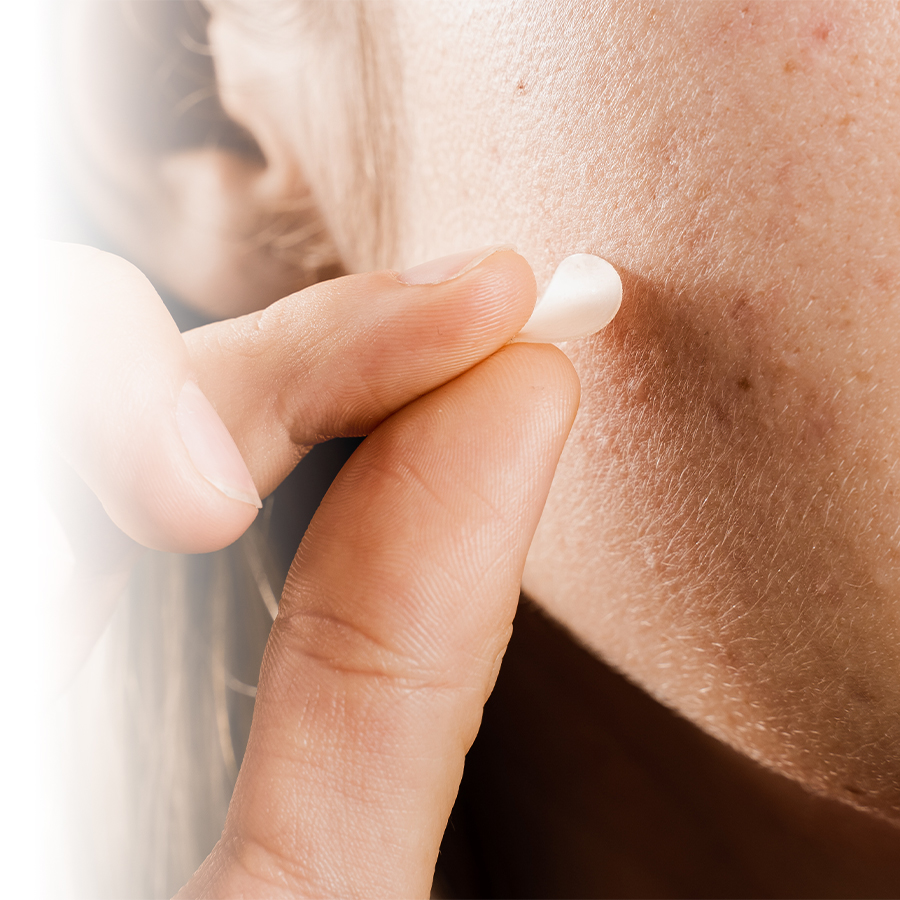What if we told you that you could make your acne pimples disappear overnight, simply and quickly? It is possible with those famous pimple patches! Let's take a look at how they work and their benefits.
The power of hydrocolloid against acne
Pimple patches come in the form of small stickers that are applied directly to the pimple and mainly contain hydrocolloid. This ingredient absorbs excess fluid from the pimple, reducing inflammation and, at the same time, speeding up healing time. The hydrocolloid thus helps eliminate pimples without drying out the skin.
This ingredient enables the pimple patches to cut off oxygen to eliminate the bacteria that cause acne.
Tip: Avoid popping your pimples yourself. You could make the situation worse by spreading bacteria on the skin. Read our article before declaring war on pimples.
When should I use a pimple patch?
Acne patches can be applied in a number of situations.
- When the pimple becomes red and swollen: Since hydrocolloid helps reduce inflammation, it is particularly useful to apply a patch to a pimple that has become red or swollen.
- If you've accidentally popped the pimple while scratching: Applying a hydrocolloid patch to a popped pimple can minimize damage by absorbing remaining fluid and protecting the affected area from infection.
- When the pimple has reached maturity: Your pimple has stopped growing and has a white head? It's probably ripe and ready for treatment! Patches can help by absorbing pus without popping the pimple, reducing the risk of scarring.
- If the pimple is on an area prone to rubbing: Is your pimple located on a part of your face that is frequently touched or rubbed? Apply a patch to protect it and reduce irritation.
What about cystic acne?What about cystic acne?
This type of acne is generally more severe and causes cysts located deep beneath the skin. Hydrocolloid patches, which only work on open pores and have no effect on subcutaneous pimples, are relatively ineffective against cystic acne. As such, it is best to consult a dermatologist, who will be able to recommend more appropriate treatments.
When to remove a pimple patch?
For best results, leave your patch on for 6 to 12 hours, or overnight. You will notice that the patch becomes whitish where it has absorbed the liquid, a sign that it has done its job. Remove it as soon as its colour changes to prevent it from adhering too tightly to the skin and making removal painful. After removal, gently cleanse the area and continue with your usual skincare routine.
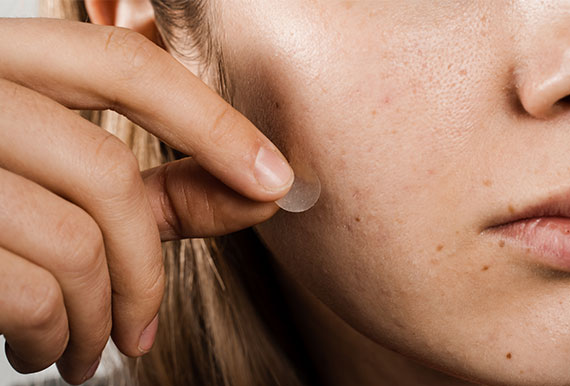
How do pimple patches work?
Pimple patches are very easy to use and only require three steps:
- Cleanse skin thoroughly and pat dry;
- Gently peel off the patch and apply directly to the pimple;
- Leave it on overnight. You can also wear the patch during the day and cover it up with a bit of makeup.
How do I make a pimple patch?
If you are unable to go to your pharmacy, or a pimple appears just before an appointment, it is entirely possible to make a pimple patch to get rid of it. Here are the steps to follow:
- Use a hydrocolloid compress (available in pharmacies).
- Disinfect the area, then dry thoroughly.
- Cut a small piece of hydrocolloid to the size of the pimple, leaving a margin of about 2 mm all around.
- Apply the film, pressing lightly to ensure proper adhesion.
- Leave on for 6 to 12 hours, then remove as soon as the patch whitens.
How do I apply makeup with a pimple patch?
It's a bit tricky, but entirely possible. Here's a simple routine to get you started:
- Cleanse your face as usual, making sure your skin is completely dry. Then apply the patch to the acne-affected area, making sure it adheres well to your skin.
- Apply a makeup primer over and around the patch to smooth your skin and create an even canvas. Make sure you choose a product that suits your skin tone and type.
- Apply foundation all over your face, blending with a brush or sponge. Avoid applying too much foundation to the patch, otherwise you risk making it more visible.
- Camouflage the patch by dabbing on a little concealer (be careful not to move the patch!). If the patch is transparent, you can also apply a thin layer of foundation or powder to even out the colour.
- Complete your makeup routine with a blush, bronzer or illuminator, but avoid applying too much to the patch area. You can also use a setting spray to extend the hold of your makeup and give it a natural look.
- Set your makeup and mattify the acne-affected area (patch included) with a light coat of loose or pressed powder. Translucent powder is recommended to prevent overlaying.
What are the best patches for pimples?
Mighty Patch Invisible+: Thinner and lighter, these daytime acne patches blend so perfectly with the skin they become almost undetectable.
Sunny Teddy patches: Sunny Teddy anti-acne patches are composed of hydrocolloid to remove impurities from the skin, infused with aloe vera to soothe the skin and enriched with bakuchiol to purify the skin.
Blume Buds Power Patches for Acne Prone Skin: A bit like cute little band-aids packed with goodness, these powerful little patches absorb all the moisture, excess sebum, and impurities contained in blemishes to calm irritation and purify the complexion.
Bioré Day Or Night Blemish Patches: Made with medical-grade, plant-derived hydrocolloid, these ultra-thin acne patches are suitable for all skin tones and can be worn day and night. Their 15 mm diameter covers pimples of different sizes
Skin Republic Spot Clear Patches: Tea tree oil visibly diminishes blemishes and pimples overnight, and volcanic ash removes impurities and prevents blemishes from reappearing.

